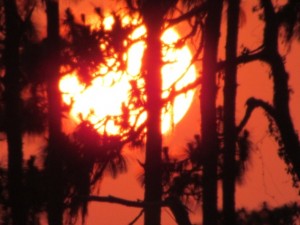 One thing Deb and I noticed immediately while on the Yeehaw Ranch was the shape the cows and calves were in. I’m telling you they all had plenty of weight and their coats were slick as glass.
One thing Deb and I noticed immediately while on the Yeehaw Ranch was the shape the cows and calves were in. I’m telling you they all had plenty of weight and their coats were slick as glass.
Shane has been continually working out the older cows and replacing them each year with some of the better heifer calves they’ve been producing, and it’s really working out well on this place.
During the heat of the day, you could look into the tree lines around the cypress heads, or under big oaks out in the pasture, and they seemed to be laying everywhere. All were in just fine shape and were just really pretty calves.
This in itself is a testament to the time and effort Dad and Shane have put into this. Today, the program they’ve been on in the continual replacement yearly of their older cows, is really beginning to reap rewards for them. You only have to ride over the place and look around to see the progress they’ve made. It’s obvious that what they’re doing is right on.
As I’ve said the weather down here has been really dry. Most of the cypress heads, or swampy areas were dried up, and it also startled me at the amount of grass the Yeehaw place had, even though in an extended dry spell.
Shane was telling me about how dry the front pasture coming in was, but honestly, when we pulled in, it wasn’t nearly as bad as what I expected. Deb and my place is far drier than what I’d seen at Yeehaw. Whereas our pastures were really showing the effects of dry weather, the grass literally scorched in many areas, Yeehaw didn’t seem to be anything like that.
Though you could see this type of effect on the grass down there wasn’t far off, the place wasn’t nearly as dry, grass wise, as ours. Had they had rain since we’d had, I’m not sure, but I did find it amazing the grass was doing so well, while the heads had pretty much dried up.
I do know though that with the rain they received Saturday evening, and again on Sunday morning, they’ll be in good shape for another week or so.
Once Deb and I had gotten back to our home, it was obvious to us as well, that we’d had a good, good rain here as well. Boy, we were sure needing it here, but there were plenty more in the same shape we were, that were sure glad they got it as well.
Our garden was mainly subsisting on what water we could get on it each day, and that was it, but this last rain has put it right back into good shape. The pastures here looked much better than when we’d left, and I know our old cows were glad to see it too.
Getting back to the shape of the cows and calves in Yeehaw once more, I’m a firm believer in the chicken manure we’ve been using on the pastures. Not only is it an organic fertilizer, but is heavy in its nitrogen content as well. I believe, and again I’ve been in the paving business a long, long time now and not ranching, but I think it’s about 16% nitrogen.
I’m not pulling your leg when I state you can tell where our pastures stop on the border fencing, and someone else’s start. The difference in the grass is obvious. The more nutrients in the grass the mama cows have, the more nutrients the young calves receive from the mama’s milk. Then as they graze and pick around themselves, they receive the same benefit as the mama cows too.
Another reason of the cows and calves looking so well is the bull. You keep good bulls on the place, young, strong bulls with good bloodlines and this is another main factor in the offspring.
This being no matter if your plan on keeping many of you heifers for your own use of bringing back into the herd as replacement cattle, or if you’re selling off your heifers and steer calves. A good looking, big boned, heavy yearling will bring you a better return on your investment also.
Your breeding program is very important in regards to the future of your herd, and will play a big factor of simply whether you stay in the cattle business or not. Good bulls on good cows, means good calves.
Shane is using the Braford Bull that they buy from the Adams Ranch. The Adams have a long history of being in the cattle business here in Florida. According to their website the Adams Ranch is the 15th largest cow-calf operation in the United States. (photos)
In 1999, the ranch received the Ranch of the Century Award from the National Cattleman’s Association.
This is but one example of the economic impact the cattle business and the role it still plays today here in Florida. As I said in an earlier article…”The Sunshine State…It Ain’t All About Tourism.”
I’ll be doing an article in a day or two about the coyote and its impact on the cattle and wildlife here in our State. As a matter of fact I met a trapper, Ralph Pfister, while at Yeehaw, who works for the Adams Ranch, and traps the coyotes.
He gave me about a 7-8 minute video on the impact these animals are having here in Florida, and I think you will all find it very interesting. The coyotes have migrated here from out West, and are really beginning to have a serious impact on all native wildlife.
I had just gotten through filming a doe under an oak feeding, and I was talking about the coyotes and the problems they’ve been causing here. I turned off the video, turned around, and saw a white pickup coming down the grade, and sure enough, it was the coyote man. I found this very ironic!
In closing this out today, I’d like to share with you a video, and a few pictures from the Yeehaw Ranch.
Thank you all for coming back by to see us, and I hope you all are doing well, and have a great day!
God Bless.
Dub and Deb

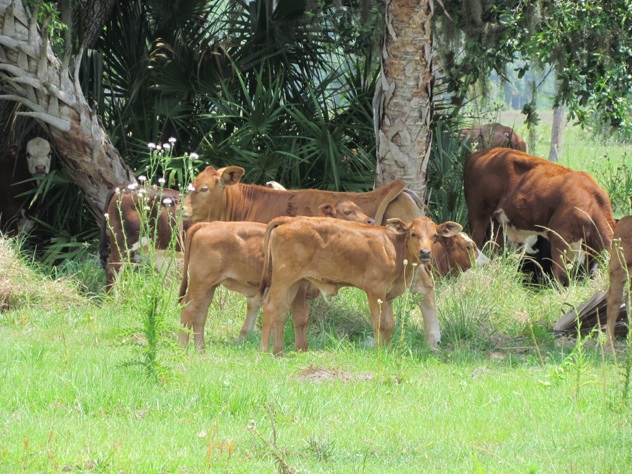
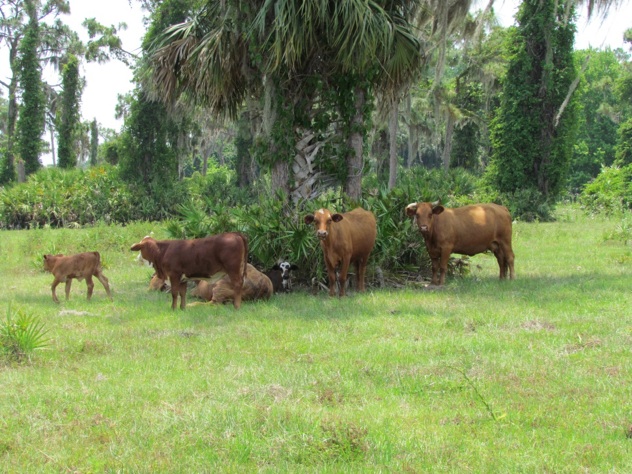
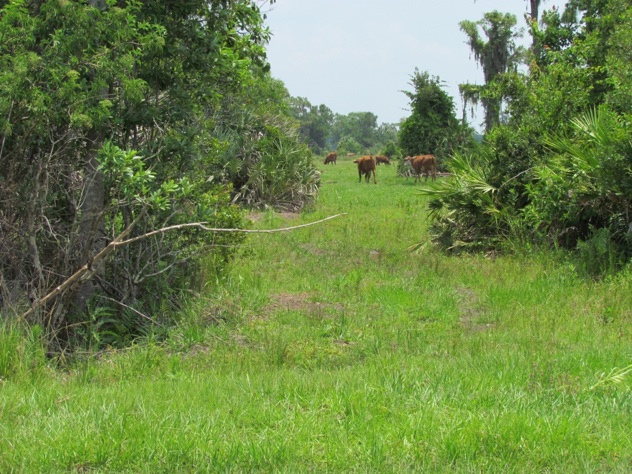
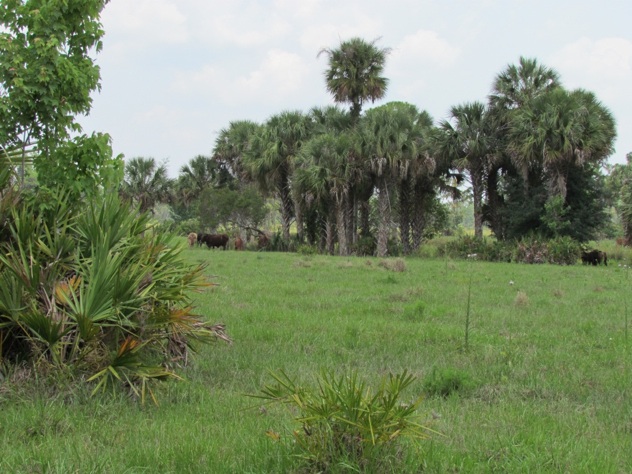
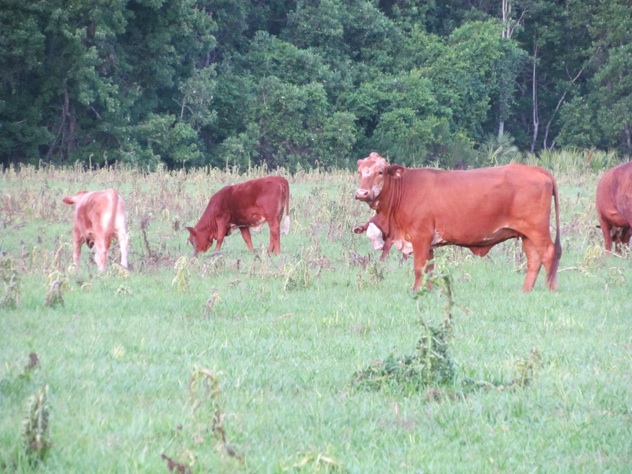
I’ve been away from the computer a lot lately, and I’m falling behind on your posts! *L*
Y’know, even though I grew up on a farm, I really don’t know a whole heck of a lot about cattle! We just kept enough to keep ourselves in milk and meat and auction off enough to pay the bills at the end of the year, so we didn’t worry too much about breeds – our herd always had a variety of breeds. My sister, on the other hand, keeps track of all that stuff, after switching from dairy to beef (actually, she kept track of the dairy cattle, too, but with a different focus). She’s got it all organized on the computer in such detail! *L*
We’ve got coyotes out our way, too. Years ago, my BIL kept a trap line on their property and would sell the pelts for a bit of extra cash. Most of their neighbours did as well, or they allowed a old Native trapper set up lines on their land. A few years back, some animal rights people convinced their municipality (which is kinda like a county for you guys, I think) to ban trapping. Within a year, the coyote numbers skyrocketed. Where they used to see a few solitary animals that generally avoided the cattle in favour of deer, suddenly there were packs of them. Soon the deer were not enough and they started killing cattle. Nothing worse than finding their prey that got away from them, only to die from their injuries later. Some had to euthanize their injured cattle, but the laws don’t allow people to euthanize the suffering deer. They had to call the local RCMP to send someone over to take care of it. Eventually, the municipality overturned the ban on trapping but it was such a mess, my BIL never took on trapping himself after that. They struck a deal with the Native trapper that was working lines on their neighbours’ land, instead.
A lot of well meaning people get really upset about humans killing off predatory animals, but they forget that humans are part of the ecosystem as well and, quite frankly, us keeping predator numbers down through hunting and trapping is a lot kinder than letting their numbers get out of control. Not only because of the damage they can do to other wildlife (or even humans), but when their numbers get too unsustainable and starvation and disease starts kicking in.